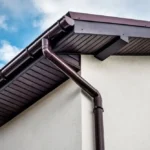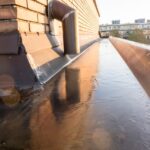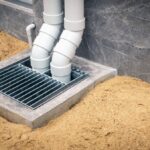Living in regions that are frequently blanketed by heavy snow comes with its own set of responsibilities. One of the most crucial is ensuring that your roof can withstand the harsh winter elements. Following proper roof care tips for snowy regions is not just about maintaining aesthetics; its also about preserving the safety and longevity of your home. Lets delve into some cost-effective and efficient methods that will prepare your roof for the worst of winter.

Understanding the Impact of Snow on Roofing
Snow accumulation on your roof can lead to serious issues if not addressed in time. Excessive weight from snow and ice can cause structural damage, leading to leaks and potential collapses. Therefore, understanding the effects of snow on your roofing is the first step in prevention.
Insulation and Ventilation: Key Components
Proper insulation and ventilation can help reduce the risk of ice dams, which are one of the most common winter roof problems. Ice dams form when heat from inside the home causes snow on the roof to melt, which then refreezes at the eaves. Ensuring your attic is well-ventilated and insulated minimizes this risk.
Ensure Proper Insulation Levels
Having adequate insulation keeps the heat where it belongs inside your home. By maintaining a cooler attic space, snow melts evenly and naturally, thereby reducing the adverse effects on your roof.
Maximize Ventilation
Good ventilation systems allow cold air to circulate, preventing warm air from heating the attic and subsequently causing snow to melt unevenly. This can greatly reduce the formation of ice dams.
Regular Snow Removal From Roof
Regular snow removal is essential to prevent damage from excessive loads. Using a roof rake with a long handle, gently remove excess snow, ensuring not to damage shingles in the process. Experts recommend removing snow when it reaches depths of approximately six inches.
For a more detailed guide on how to safely handle snow removal, visit home maintenance tips.
Inspect and Maintain Gutters
Keeping gutters clear ensures melted snow has a path to safely exit, reducing the chances of water backing up and creating ice dams. Regularly clean gutters to prevent clogging and ensure theyre properly secured, as the added weight of ice and snow can pull them away from the building.
Learn more about maintaining your gutters by visiting clean gutters from the best resources.
Addressing Roof Repairs Before Winter
Before winter hits, inspect your roof for any signs of damage such as curled or missing shingles, leaks, or other weaknesses. Conducting roof repairs ahead of time can prevent minor issues from turning into severe damage over the winter months.
Get tips on specific repairs like fix curled shingles to make sure your roof is fully prepared.
Invest in a Roof De-Icing System
If your area is particularly prone to heavy snowfall, consider investing in a roof de-icing system. These systems use heating cables to prevent snow buildup, thereby minimizing ice dams’ formation and reducing the risk of damage.
Choose the Right Roofing Material
Certain materials are better suited for extreme weather conditions. For example, metal roofing is often recommended in snowy regions due to its durability and ability to quickly shed snow.
Consideration for Shingle Types
If a metal roof isn’t an option, opt for shingles designed to withstand severe weather conditions, offering added durability and protection.
Professional Roof Inspections
Engage professionals at least twice a year to conduct a thorough inspection. A professional can identify potential issues that you may overlook, providing you with peace of mind.
Read more about extending your roof’s life using professional services by visiting extend the roof life.
Prioritize Safety During Maintenance
Your safety should be the top priority during roof maintenance. Always use proper safety gear and ensure someone knows youre working on the roof. If the task seems too risky, seek professional help.
Weather Monitoring for Precautionary Measures
Stay updated with weather forecasts and take preventive action accordingly. In cases of heavy snow forecasts, timely precautions can limit potential damage.
Utilize Technology
Invest in technology that provides alerts about severe weather conditions, so you’re never caught off guard.
Address Mold and Mildew
Heavy snow increases moisture levels, consequently increasing the risk of mold and mildew formation. Routinely check your roof to safeguard against these fungi, which can damage both roofing materials and internal structures.

FAQs on Roof Care in Snowy Regions
What is the best way to prevent ice dams?
Proper insulation and ventilation are crucial. Additionally, keep your roof clear of snow to prevent buildup that can lead to ice dams.
Should I remove snow from my roof after every snowfall?
It’s advisable to remove snow when it reaches about six inches in depth to avoid excessive loads on your roof.
Can I inspect my roof by myself?
While a self-inspection can identify visible damage, consult a professional for a thorough examination, especially before the winter season.
By understanding and implementing these straightforward roof care tips, you will not only extend the life of your roof but also ensure the safety of your home during harsh winter conditions. For more detailed roof maintenance advice, check importance of routine maintenance.
This article contains affiliate links. We may earn a commission at no extra cost to you.







